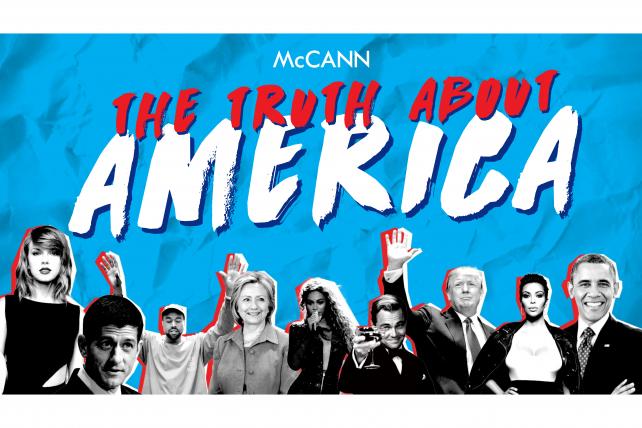Swear to tell the truth and nothing but the truth and your customers will thank you. Do the opposite and you risk ticking off the people who help you keep your doors open.
Brands that mislead, exploit or spam consumers fall into the hole of unethical marketing behavior. And like your mother told you: The first fib seems minor but it only leads to more lies, eventually coming back to bite you real hard.
To make sure we all sleep soundly at night – and make our mothers happy – let’s talk about the ugly sides of marketing. Once we know what to avoid, we’ll all be on the right track to embrace ethical marketing like the responsible people – and companies – we are.
Defining Unethical Marketing
Funny or offensive? Delicious or repulsive? Good or evil? Ethical or unethical?
The answer often depends on who you ask.
Marketing is no exception – there are certainly gray areas to navigate. The difference is that most of the time, it’s the consumer’s response that carries the most weight.
Ethical marketers create genuine conversations surrounding their product or service, building strategies and making decisions with the customers’ needs and preferences in mind. If dishonest or misleading messaging sneaks into the picture, unethical marketing starts to take over.
It’s true that sometimes brands have good intentions but accidentally deliver offensive advertisements that instantly flop. (Pepsi and Kendall Jenner, we’re looking at you.) Regardless, there’s a lot that goes into avoiding such mistakes – starting with an understanding of what those mishaps can be.
Brands that are guilty of unethical marketing risk destroying their reputation and running into some less-than-favorable legal issues. Here’s what unethical marketing practices look like:
Unethical Advertising and Marketing Practices
Sharing Misleading Information
No stretching the truth. No lies. No false exaggerations. No fake news. Sure it’s unethical, but it’s also the law. The Federal Trade Commission monitors truth in advertising, which means that advertisements should not portray misleading information. When appropriate, the FTC likes to see claims backed by genuine scientific evidence – especially when it comes to products or services that can affect consumer health or finances.
Of course, it’s natural for brands to highlight or exaggerate the best features of their products or services. This practice crosses an ethical line when it comes to messaging that can mislead consumers, such as marketing a product as a healthy way to lose weight when there isn’t significant evidence to support such a claim.
Take Activia for example. Marketed as the yogurt with special bacteria ingredients backed by scientific evidence, everyone believed it could boost immune systems and aid in digestion. Turns out that wasn’t quite the truth, and a case settled in 2010 forced Dannon to pay a $45 million fine and remove “clinically” and “scientifically proven” from Activia packaging.
Eight years later, Activia is, of course, still around, but it goes to show that not even the industry giants can get away with misleading or false messaging.
The ethical move: Stay away from distorted facts and unverifiable claims. What may spike sales initially will only hurt your business when consumers realize you weren’t truthful. Honesty really is the best policy.
Subscribe to
The Content Marketer
Get weekly insights, advice and opinions about all things digital marketing.
Thank you for subscribing to The Content Marketer!
Hiding the Ugly
Leaving out pertinent details from the story is just as bad as lying. Of course you want to put your best foot forward, but you can’t hide information that could put customers at risk.
This is especially relevant for products and services in the health and food sectors. For instance, products made entirely with natural ingredients are usually pretty safe to use – but it doesn’t mean that side effects aren’t possible. While “made from natural ingredients” and “not tested on animals” may be the front and center of the marketing messages, potential side effects should still be made available for consumers before they purchase the product.
Yes, these details aren’t always pretty, but it’s better to have it out there than be the source of consumer anger after experiencing a side effect or negative result they didn’t expect.
The ethical move: Be clear and honest. Scrap any language that could throw customers off and lead to risky misinterpretations.

Knocking Down the Competition
There’s a difference between beating the competition and beating down your competitors. The latter is far more ruthless – and not exactly admirable marketing behavior.
Picture yourself yelling at the screen when a commercial approved by a local politician running for office rags on the rival party rather than telling you anything worthwhile about what they actually plan to do if elected.
The same goes for marketing your product. Win the business because the customer believes in your brand – not because they’re dwelling on what you said about the competitor.
The ethical move: Don’t manipulate the results. Emphasize brand qualities that make you stand out from the crowd and you won’t even need to mention the competition’s name.
Offending the Public
Ethical marketing doesn’t offend, discriminate, stereotype or appropriate.
When it comes to gender, sex, religion, nationality, race, age, politics and other identifiers, marketers must be careful not to offend their audiences with flawed stereotypes or generalizations. For those brands willing to take on the challenge, it’s possible for modern marketers to help rewrite the script, straying from messaging that reinforces the gender gap or other inequalities.
That said, marketers, propagandists and even criminals are using fake profile pictures and pages on LinkedIn to distribute messages, make fraudulent connections and otherwise promote content that ranges from creepy to dystopian. And users are fed up.
As NPR reported, thousands of AI-generated LinkedIn profiles exist, rife with conventionally defined symmetrical faces, ambiguous names and tailor-made ethnic backgrounds — all with the purpose of pushing conspiracies, insensitive material or downright terrible marketing.
The ethical move: For starters, exploiting technology to this degree is itself a breach of marketing ethics. Using it to produce mass-marketed outreach messages on the back of certain ethnicities or genders, too, is a no-go.
Exploiting Emotions
All marketers know that appealing to emotions is an effective way to reach consumers – but only when done in good taste. Ethical marketers sympathize with emotions, while unethical ones exploit them.
This unethical marketing practice may include intentionally evoking rage or sadness to manipulate consumer decisions, using fear tactics, targeting disadvantaged people or tricking customers into buying a product or service.
The ethical move: Craft messages that appeal to consumer emotions without manipulating them.
Craft messages that appeal to consumer emotions without manipulating them.
Spamming
Don’t overwhelm consumers with an onslaught of emails, phone calls or advertisements – especially when they didn’t give you permission to contact them in the first place. It’s called spamming and it’s essentially the digital version of door-to-door soliciting. If anyone says this unethical marketing practice doesn’t rub them the wrong way, they’re probably lying.
On the prowl for a boost in mentions and organic search rankings, some marketers turn to black-hat link building techniques. Don’t follow their lead, as this involves the unethical practice of spamming comment sections, forums and websites with self-serving links.
Spamming is never really worth it, considering it typically angers and annoys rather than attracts consumers. Plus, the FTC also monitors this unethical practice, laying out guidelines in the CAN-SPAM act.
The ethical move: Build your contact lists organically. Earn consumer attention with inbound marketing techniques designed to start a conversation your audience is willing – rather than forced – to join.
Plagiarizing Content
We all learned this one in school, so it goes without saying that you can’t steal words from another brand’s mouth. That includes marketing messaging from sales scripts to blog posts to landing pages. You must check the content of blog posts through a free plagiarism checker to ensure their uniqueness. This will help you to find any plagiarized text in your content with its original source.
The ethical move: Give credit where credit is due. Find inspiration in other content but make sure you’re delivering original pieces with your own spin.
Can Consumers Really Tell the Difference?
It’s tricky.
Studies show that about 75% of consumers overestimate their ability to spot fake news in the media. And when people’s judgment is miscalibrated, they’re more likely to reshare false or misleading stories, thus perpetuating a cycle of misinformation. Unethical marketers, of course, can tap into this dissonance.

Younger consumers in particular hold corporations accountable for their social justice, diversity, and ethics policies. In the years ahead, the marketing pendulum will likely continue to swing toward transparency, authenticity and ethical behavior.
Stand up for something important, make a difference where you can and be a valuable presence in your customers’ lives.
Don’t Be the Bad Brand
Nobody likes the bad guy, so don’t volunteer your brand for the position. It’s a one-way street to ruining your relationship with your audience and losing out on the sales you need to reach company goals.
Here’s the key point: Unethical marketing practices destroy any trust brands build with their audience.
On the other hand, ethical marketing can lead to the favorable results you want to see from your efforts, including boosts in:
- Brand credibility.
- Audience engagement.
- Customer loyalty and retention.
When ethics are at the heart of your decisions, you won’t have to clean up any legal messages or work doubletime to re-establish customer trust.
Added to everything we just discussed, there’s also the concern of how unimpressed your mother would be by your unethical actions. Worse – disappointed.
Is it sinking in yet? Going forward, let’s all promise to uphold our ethical responsibility and be on our best marketing behavior.
Editor’s Note: Updated July 2022.





